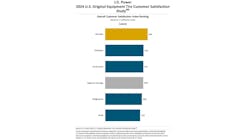While the Supreme Court will hear arguments related to the Biden Administration's COVID-19 vaccine mandate on Jan. 7, the Occupational Safety and Health Administration (OSHA) is preparing to begin enforcing some parts of the rule just three days later. Employers with at least 100 workers need to pay attention to the details, which could change.
The mandate was first unveiled by the White House in November, but court challenges have so far delayed its full implementation. The Tire Industry Association (TIA) has an update of where things stand.
It's important to know there's not a clear timeline of when the Supreme Court might issue a ruling after it hears arguments.
OSHA plans to enforce these pieces starting Jan. 10:
- Covered (employers with 100 or more employees) must have identified - and keep record of - employee vaccinations statuses.
- Covered employers must provide employees with up to four hours of paid leave to receive each dose of the COVID vaccine and reasonable paid time off to recover from any side effects that the employee may experience from each dose of the vaccine.
- Covered employers must implement and communicate written COVID safety protocols that include provisions: (i) requiring employers to provide notice if they are diagnosed with or test positive for COVID-19, (ii) removing employees who are diagnosed with or test positive for COVID-19 from the workplace until certain criteria are met, and (iii) requiring unvaccinated employees to wear face coverings when they are indoors or sharing a vehicle for work (with certain exceptions permitted).
- Covered employers must report work-related COVID fatalities or hospitalizations to OSHA.
TIA suggest employers prepare for three possible outcomes:
- The Supreme Court issues a decision on or before January 10 upholding the (Emergency Temporary Standard) ETS and the OSHA proceeds with enforcement of the ETS.
- The Supreme Court issues a decision on or before January 10 striking down the ETS or staying the ETS pending a decision.
- The Supreme Court doesn’t decide the case or stay the ETS by January 10 and OSHA proceeds with enforcement of the ETS.
From TIA:
"Businesses with 100 or more employees need to be prepared that, unless the Supreme Court rules otherwise, the provisions of the ETS will go into effect on Jan. 10 and Feb. 9 and OSHA will begin issuing penalties for non-compliance on those dates.
"While the vaccine and testing provisions have gotten the most attention, as outlined above, the ETS also has a wide range of other requirements that are set to go into effect on Jan. 10. Items such as developing and issuing compliant policies and determining all employees’ vaccination statuses will take time and planning. Covered businesses that elect to wait to see what happens with the Supreme Court before taking steps towards compliance may find themselves in a scramble or unable to get themselves into full compliance if enforcement begins on Jan. 10 as OSHA has planned.
"The legal issues that the Supreme Court will be considering in this case are nuanced and deal with questions of administrative law and rulemaking authority. Businesses that are assuming that the ETS will be struck down - or that the Court will have ruled on the case by Jan. 10 - are perhaps taking an unnecessary risk. Rather than waiting for the Supreme Court’s decision, businesses may want to begin to take steps now to prepare so that they can be in full compliance by Jan. 10 if the ETS goes forward on that date."



